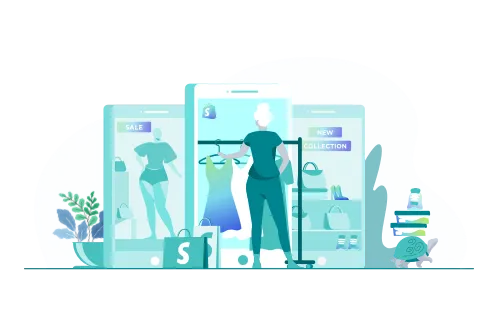Welcome to eCommerce, a constantly evolving $4 trillion market. With rising customer expectations and emerging innovations, business owners must keep up and follow future eCommerce trends to stay ahead of the game.
What are the latest developments and forecasts for the eCommerce industry in 2023 and beyond? Keep reading to learn about the newest trends that will help you stay competitive. GenovaWebArt will use its ten-year experience in eCommerce to share the most relevant tendencies you can leverage to boost your sales.

What Are the Main Future eCommerce Trends?
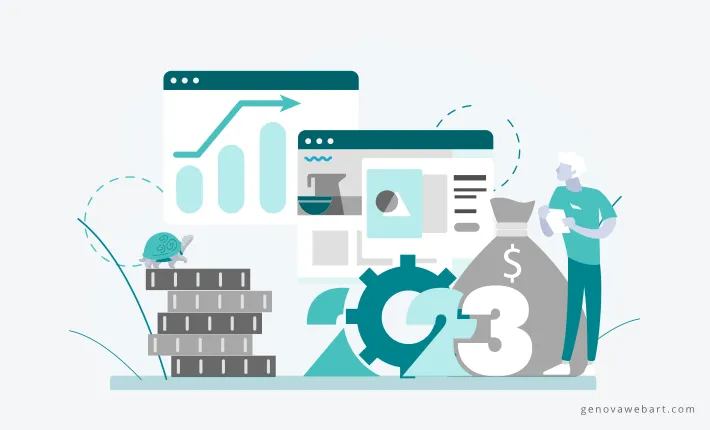
There are plenty of new eCommerce trends in 2023, but some tendencies from past years also remain relevant. So, let’s look at the forecasts you can apply to your business.
Live Commerce
Live commerce is one of the latest eCommerce trends, which emerged against the backdrop of the pandemic. As people turned to online shopping, they required more innovative ways of viewing products. Live commerce has appeared as a solution, combining live streaming and interactive shopping experiences for customers.
This trend was especially noticeable in China, with live commerce sales reaching $423 billion in 2022. Yet, currently, it has spread to other countries across the world. As McKinsey research notes, if China’s experience is well-adopted in the other parts of the world, global live commerce sales will account for 10 to 20% of all eCommerce sales by 2026.
This approach to selling allows businesses to showcase products more dynamically and interactively. Live commerce can help build customer trust and loyalty, as consumers feel more connected to the brand and the goods they consider buying. On top of that, live stream hosts can answer customer questions and offer special promotions to encourage sales in real time.
Live commerce also provides businesses with plenty of customer data. Companies can gain insights into consumer preferences and behavior by analyzing interactions during live streams. As a result, they can tailor their marketing strategies and product offerings to meet customer needs better.
Search Personalization
On-site search personalization is the latest eCommerce trend that involves tailoring search results based on the user’s behavior and preferences. According to the State of Personalization 2022 report, almost 50% of consumers will likely repeat purchases after encountering a personalized shopping experience with a retail brand.
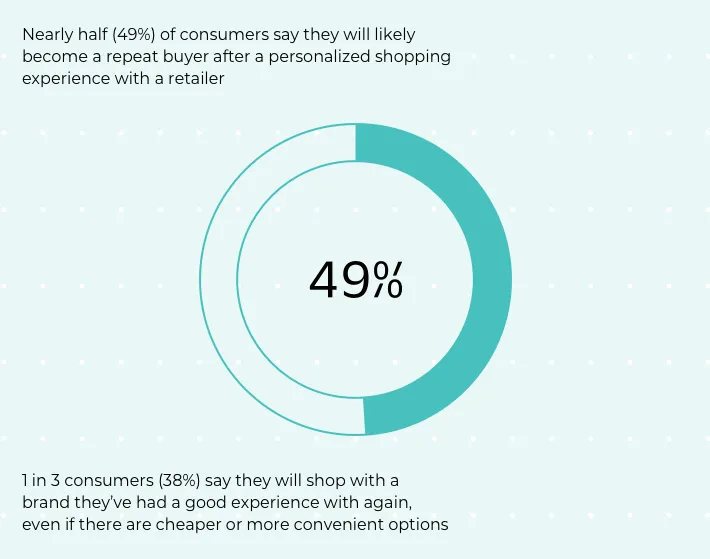
Thus, personalization and ROI go hand in hand. Additionally, businesses can increase customer engagement and boost conversion rates by providing their consumers with more relevant search results.
Starting with on-site search personalization requires time and effort, yet it’s absolutely worthwhile. Companies can use previous search queries, purchase history, and clickstream data to study customer preferences and behavior. They can also leverage machine learning algorithms to conduct such analysis in real time.
Customized Packaging
Though the saying goes, “Don’t judge the book by its cover,” customers usually do so. FinancesOnline states that about 72% of Americans base their purchasing decisions on packaging design. So, here’s where customization comes in handy.

Tailoring your product packaging to your brand’s unique qualities is one of the future trends in eCommerce. You can go even further and customize the packages following the needs and preferences of each customer. An engaging unboxing experience will improve customer satisfaction, boost loyalty, and develop a competitive edge in the crowded eCommerce market.
Apart from distinctive packaging, you can use custom messages and unique branding elements to build a stronger emotional connection between customers and your business.
Omnichannel eCommerce
Omnichannel eCommerce provides a seamless shopping experience for customers across multiple channels, both online and offline. This approach integrates physical stores, websites, mobile apps, social media platforms, and marketplaces to deliver personalized customer interaction with the business.
The Twilio Segment saw an investment increase in omnichannel personalization in 2022, yet there’s still plenty of space for growth.
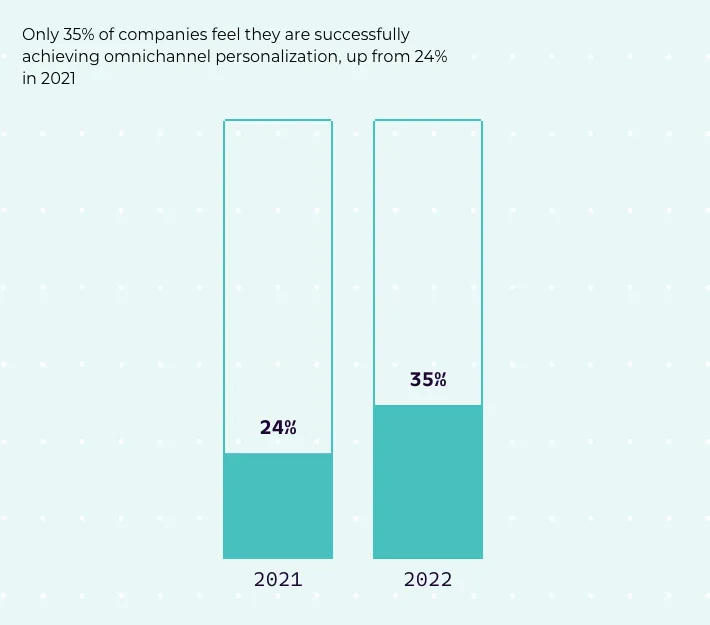
Omnichannel eCommerce aims to create a single view of the customer, regardless of the channel they use to interact with the brand.
How can an eCommerce business achieve the omnichannel customer experience? It should
- Have a centralized inventory management system
- Allow real-time stock-level visibility across all channels
- Have a unified customer data platform
- Offer various fulfillment options like click-and-collect, same-day delivery, or ship-to-store
- Provide seamless customer support across all channels
The omnichannel approach is one of the trends in eCommerce industry worth your investment. It’ll drive your sales and improve customer experience and loyalty.
Multiple Payment Options
In 2021, almost 70% of customers dropped their shopping carts before paying for the items in there. It happened mainly because of the unoptimized checkout experience (here’s the info on Shopify checkout page customization) and the lack of payment options available in the online store.
Thus, eCommerce forecast trends include multiple ways customers can pay for their products. Traditionally, credit and debit cards have been the most common payment methods, but today, there are many more options available:
- Mobile wallets. Services like Apple Pay or Google Pay allow customers to store their payment information on their smartphones and make purchases with just a tap or a scan.
- Digital currencies. Cryptocurrencies such as Bitcoin and Ethereum are gaining acceptance with more merchants adding them to their online stores.
- Buy now, pay later (BNPL). Services like Afterpay and Klarna allow customers to split their purchases into smaller, interest-free payments over time, making it easier to afford expensive products.
- Bank transfers. These will enable customers to pay directly from their bank account without a credit or debit card.
- eWallets. Services like PayPal and Skrill allow customers to store their payment information in one place and make purchases online without entering their payment details each time.
Multiple payment options will provide more convenience and flexibility for your customers. So, your business will benefit from increased sales and reduced cart abandonment rates. As a professional Shopify vendor, we also offer you to learn more about payment methods on Shopify & its integration.
One-Time Buyers Challenge
According to Forbes, 75% of customers never repeat their purchases in the same online store. That’s a significant challenge for eCommerce businesses wanting to gain a loyal audience.
So, in 2023, learn to turn one-time buyers into regular customers. While it is relatively easy to attract new shoppers, keeping them coming back is an entirely different level. It’s particularly true for businesses that sell not-frequently-purchased products like furniture or electronics.
One of the main reasons why one-time buyers don’t return is that they have a poor experience with the eCommerce business, e.g., slow shipping or poor customer service. They may also find a better deal or a more convenient store.
Is there a way to overcome this challenge? Yes, and here are a few tips:
- Sell high-quality products
- Prove excellent customer service and communication
- Offer fast and reliable shipping
- Deliver a personalized shopping experience
- Show tailored product recommendations
- Offer rewards for repeat purchases
- Grant loyalty programs or discounts for future purchases
To avoid falling under the one-time buyer tendency, focus on building strong relationships with their customers.
Mobile Commerce
Mobile commerce (mCommerce) is everywhere. More and more customers use their smartphones to browse online stores and purchase products through convenient mobile apps.
If you still don’t have such an app or haven’t optimized your eCommerce website for mobile devices, hurry up. Here are a few stats to prove the relevance of this trend:
- Mobile commerce sales in the US have surpassed $415 billion and continue to grow.
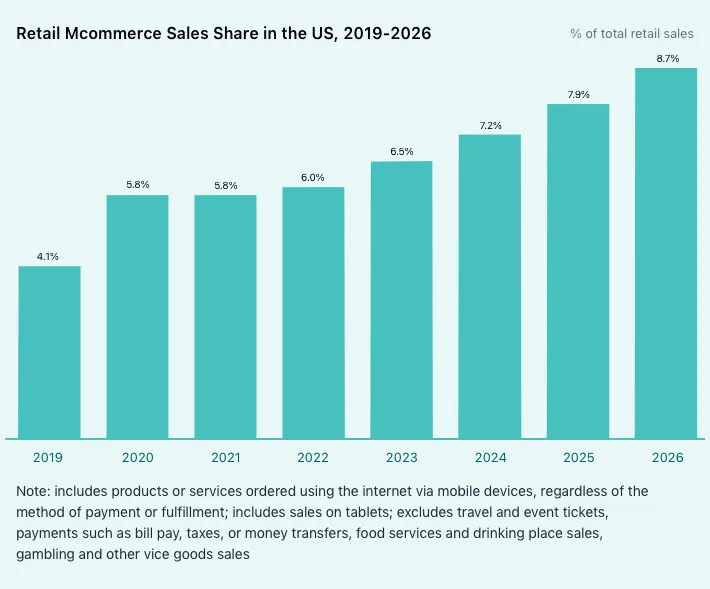
- The global mobile commerce market will grow from over $267 billion in 2021 to $1.9 trillion in 2030.
- Retail mCommerce sales will account for over 43% of all eCommerce sales by the end of 2023.
- Smartphones accounted for 74% of eCommerce website traffic globally and generated 63% of online orders in 2022.
Why is mobile commerce growing in popularity at such a breakneck pace? Here are several reasons to explain this:
- Mobile devices are convenient and portable, allowing customers to shop from anywhere and at any time.
- Many eCommerce businesses have developed user-friendly mobile apps , featuring one-click payments, product recommendations, and personalized offers.
- Mobile commerce connects businesses with their customers in new ways, including AR product demonstrations.
Make sure you hop on this trend if you haven’t yet. You can also learn how to optimize Shopify for mobile in our comprehensive guide.
eCommerce Tech Trends
While delving into the prediction of the future trend of e-commerce, we briefly mentioned some techs that help online stores thrive. Let’s talk about those technology trends in more detail.
- Artificial Intelligence. AI uses machine learning algorithms and data analytics to automate and optimize various aspects of the eCommerce process. According to Statista, 70% of business owners believe this technology will help them achieve greater personalization. The main applications of AI include chatbots, virtual assistants, chatGPT capabilities, personalized product recommendations, and fraud detection.
- Augmented Reality. AR is becoming increasingly popular in eCommerce, particularly in the fashion and beauty industries. This technology allows customers to virtually try on products, such as clothing and makeup. It reduces the likelihood of returns. Following Statista, about 1/3 of US shoppers will try AR by 2025.
- Voice commerce. It’s one of the future hardware trends in eCommerce that involves using voice-activated devices such as Amazon Alexa or Google Home to make purchases. With the increasing popularity of smart speakers and virtual assistants, the voice commerce market will grow by $55.68 billion during 2022-2026.
- Social commerce. This trend involves using social media platforms like Instagram, Facebook, or Tiktok to sell products and services. According to Insider Intelligence, social commerce worldwide will expand three times faster than regular eCommerce, growing from $492 billion in 2021 to $1.2 trillion in 2025.
- Biometric authentication. Using such technologies as facial recognition or fingerprint scanning is becoming more widespread in eCommerce. Expected to surpass $150 billion in 2030, biometric technology is a decent way to improve online store security and reduce the risk of fraud.
These are the primary tech and business-related trends to look for and implement in 2023 and beyond. They are transforming how eCommerce companies operate and making it easier for customers to shop online.
GenovaWebArt Experience in Implementing the Latest eCommerce Trends
GenovaWebArt is an experienced Shopify development vendor with profound expertise in creating custom eCommerce solutions for businesses of all sizes. We’ve been delivering performant and scalable Shopify websites and apps since 2012 and can hop on implementing the latest eCommerce trends for you.
Our core services include the following ones:
- Shopify theme development and customization. We can implement an original design template for your store, following your business needs and requirements.
- Shopify app development. Our team can build a custom app for your store or integrate a public one from the Shopify App Store.
- Shopify design. We can deliver a top-notch look and feel to your store, following the latest trends in the industry.
- Complex Shopify solutions from scratch. Our experts can use their extensive knowledge to create high-load eCommerce systems.
- Shopify maintenance and support. GenovaWebArt can provide ongoing maintenance and support for Shopify stores, including updates, security, and troubleshooting.
On top of that, you’ll get a reliable team that you can hire at a reasonable cost. We train our professionals regularly and have an official Shopify certification.
And now, let’s look at how we implemented some of the mentioned trends in our Shopify stores:
Mobile Commerce with the Ten Thousand Online Store
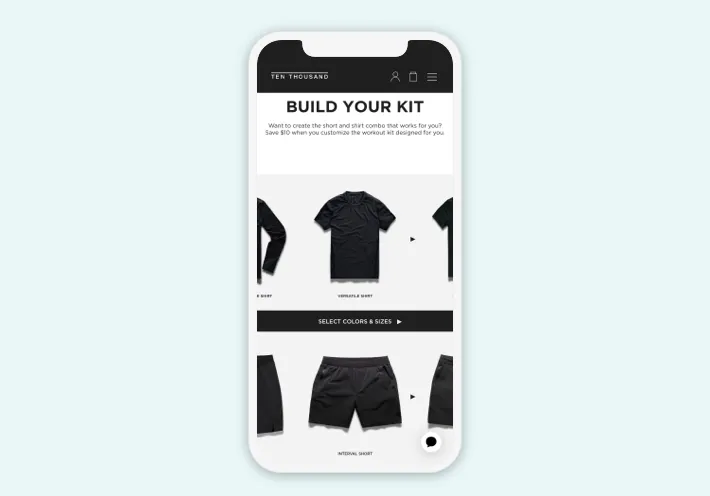
One of our clients, the Ten Thousand sportswear brand, requested Shopify Plus development services. As a part of the job, we ensured that the eCommerce website we created was mobile-optimized. Our work resulted in an exceptional shopping experience, both mobile and web.
Multiple Payment Options in the Kit and Kin Online Store
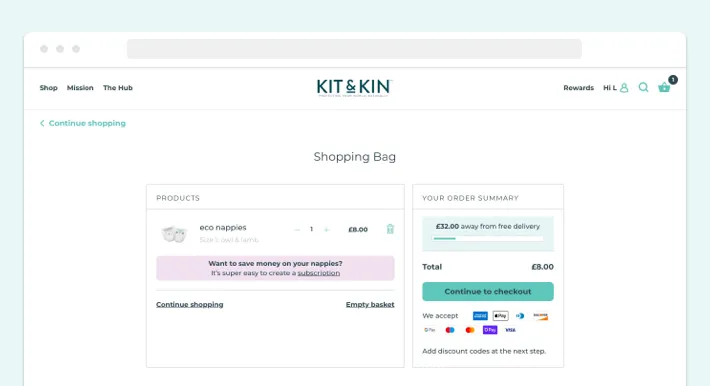
Kit & Kin is a US-based brand specializing in selling nappies and other child care products. Our task was to migrate their existing online store to the Shopify Plus platform and provide ongoing support. The GenovaWebArt team successfully re-platformed Kit & Kin and made sure the store offered multiple payment options. In addition to credit and debit cards, this eCommerce store now supports Apple Pay and Google Pay.
Our knowledgeable team can help you implement any of the trends we described today. Our experts can also assist you with your online store update and management.
Conclusion
The eCommerce landscape is constantly changing, so businesses need to stay ahead of the curve to remain competitive. Some of the hottest future eCommerce trends you can consider include live, mobile, and omnichannel commerce, along with such tech innovations as AI, AR, and voice commerce.
If you want to incorporate some of the trends we mentioned above into your eCommerce business, contact GenovaWebArt for consultation. Our reliable development team will help you update your Shopify website, create its mobile version, and deliver a user-friendly design. We’ll embrace the latest innovation to provide exceptional shopping experiences and boost your sales.





